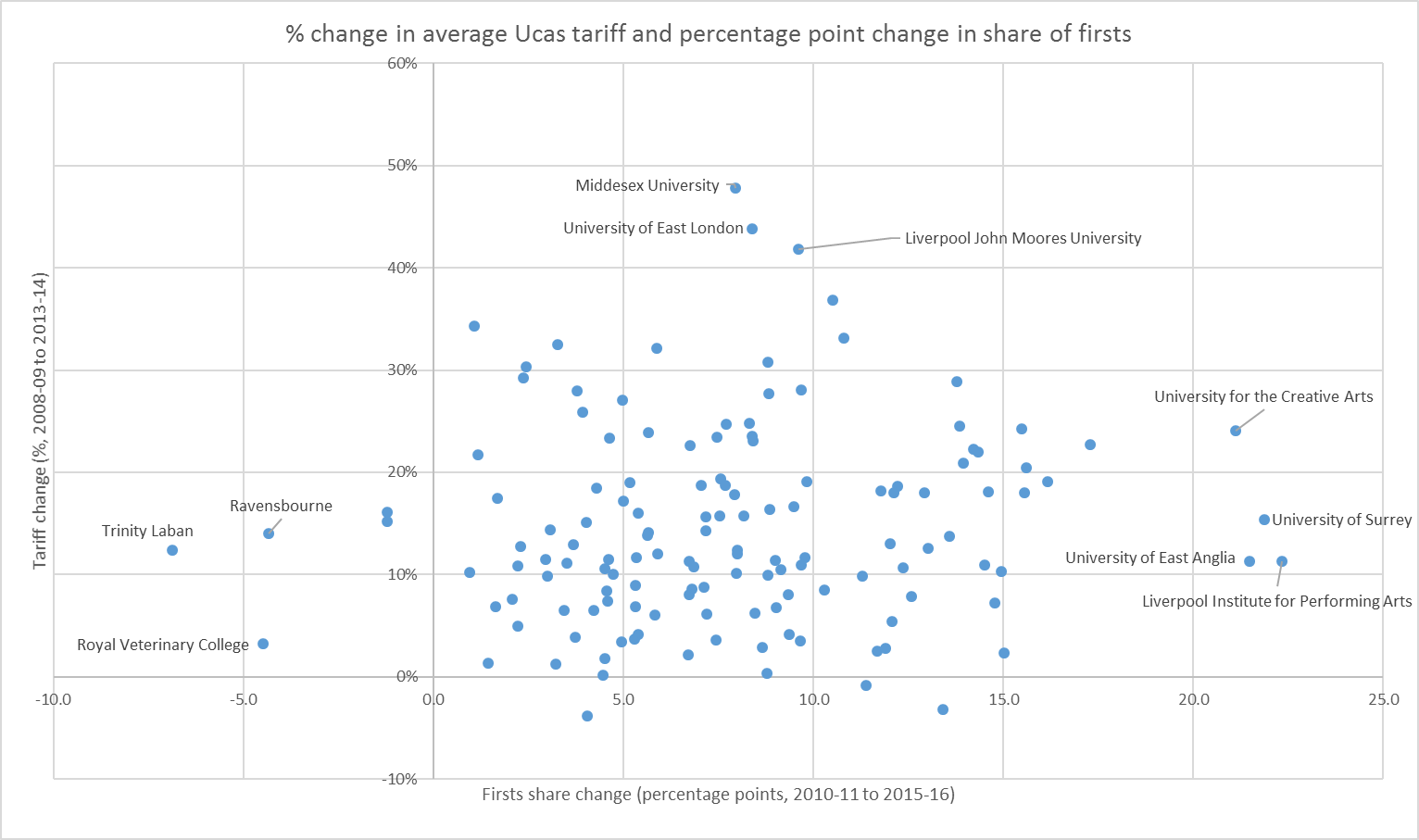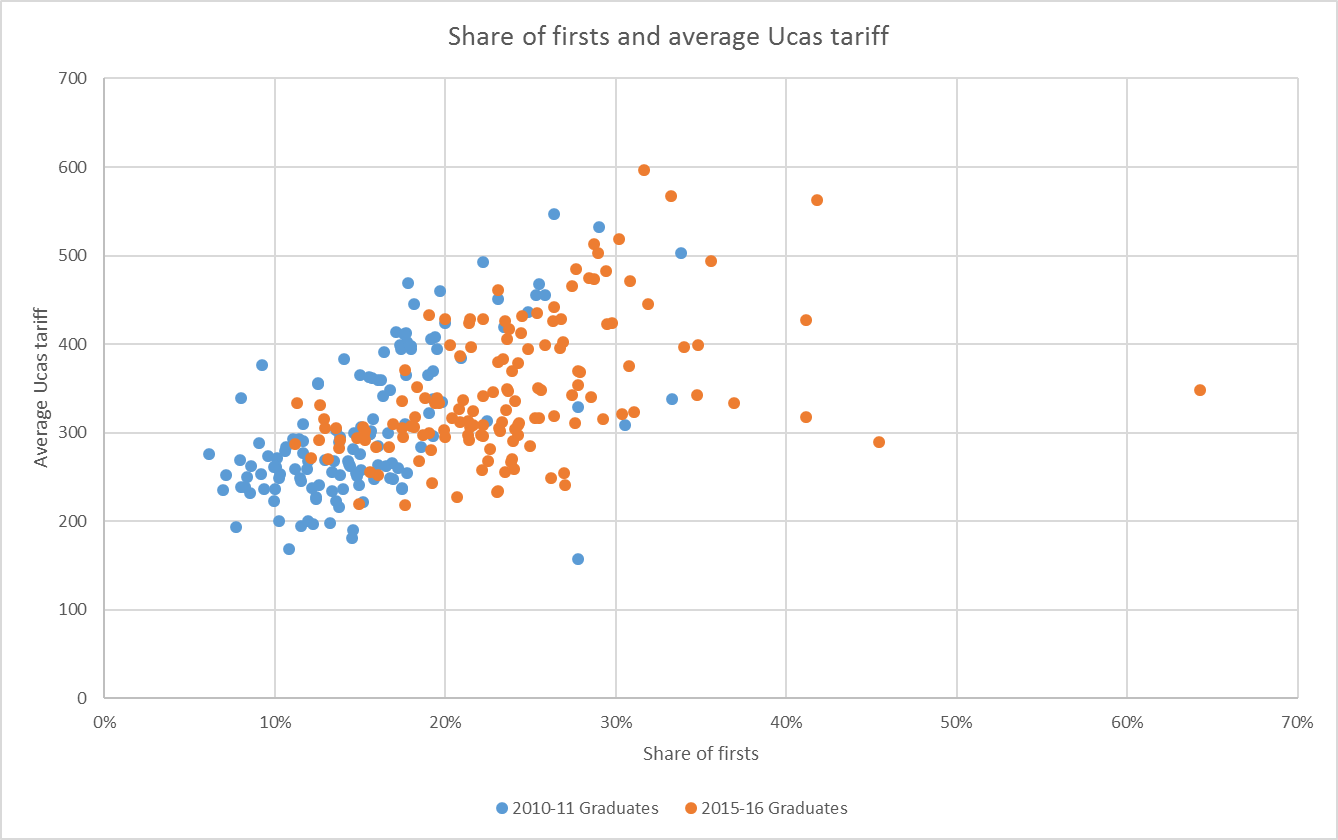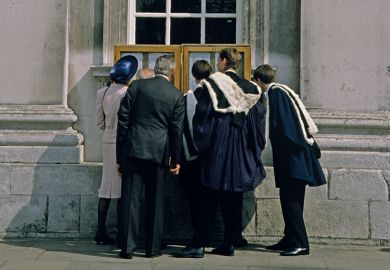Data published last month showing that at least a quarter of students are now achieving a first at a third of UK universities has again sparked off the debate about degree standards.
But are there simple explanations for this clear trend, which has also seen the number of 2:1s leap in recent years?
One potential explanation, cited by universities themselves and experts on standards, is that school-leavers are entering higher education with better grades, and are thus better prepared and positioned to succeed than earlier cohorts.
A way to examine this hypothesis is to look at the average Ucas entry tariff score – which roughly equates to qualification level – of students who are admitted to each university.
The data on the increasing share of firsts – a Press Association analysis of raw figures from the Higher Education Statistics Agency – looked at the change from 2010-11 to 2015-16. Therefore, the simplest comparison on Ucas tariff is to consider the change in average scores from 2008-09 to 2013-14, the years those students would have started university if they were on three-year courses.
What this broadly shows is that while entry standards did move upwards over the period, the percentage rise in average tariff at each institution varies considerably and does not seem to be linked to the percentage-point rise in the share of firsts.

However, one problem with this approach is that the percentage change in Ucas tariff will be larger for universities that had a lower average tariff in the first place. Another way to show the data is to plot the share of firsts against average Ucas entry tariff for each cohort.

This appears to show more of a link with the cluster moving up towards the top right over the time period. But at the same time, there is more of a spread in the share of firsts for the later graduating cohort, suggesting that the rising entry standards cannot explain the increase in top degrees everywhere.
Bernard Rivers, a retired economist and former visiting fellow at the University of Cambridge who has examined in detail the rise in firsts at the institution, said that much more granular data on students’ relative qualifications were needed to get a true picture and that looking at changes overall did not allow for natural statistical variations.
Nevertheless, in his view, although improving entry standards were a factor in rising grades (alongside students working harder and receiving better teaching), they could not on their own account for the upward trend in awards and, he believes, grade inflation “does indeed apply”.
“The tough question, of course, is to what extent is grade inflation, rather than the other three factors above, a cause for more students being awarded firsts?” he said.
“What I do know has had an impact…is the huge political pressure within universities to award at least a 2:1 because of the number of jobs for which, these days, employers won’t even look at you if you don’t have a first or a 2:1. And no doubt this factor applies also regarding firsts, at least for the more rarefied jobs and postgraduate positions.”
Find out more about THE DataPoints
THE DataPoints is designed with the forward-looking and growth-minded institution in view
Register to continue
Why register?
- Registration is free and only takes a moment
- Once registered, you can read 3 articles a month
- Sign up for our newsletter
Subscribe
Or subscribe for unlimited access to:
- Unlimited access to news, views, insights & reviews
- Digital editions
- Digital access to THE’s university and college rankings analysis
Already registered or a current subscriber?




